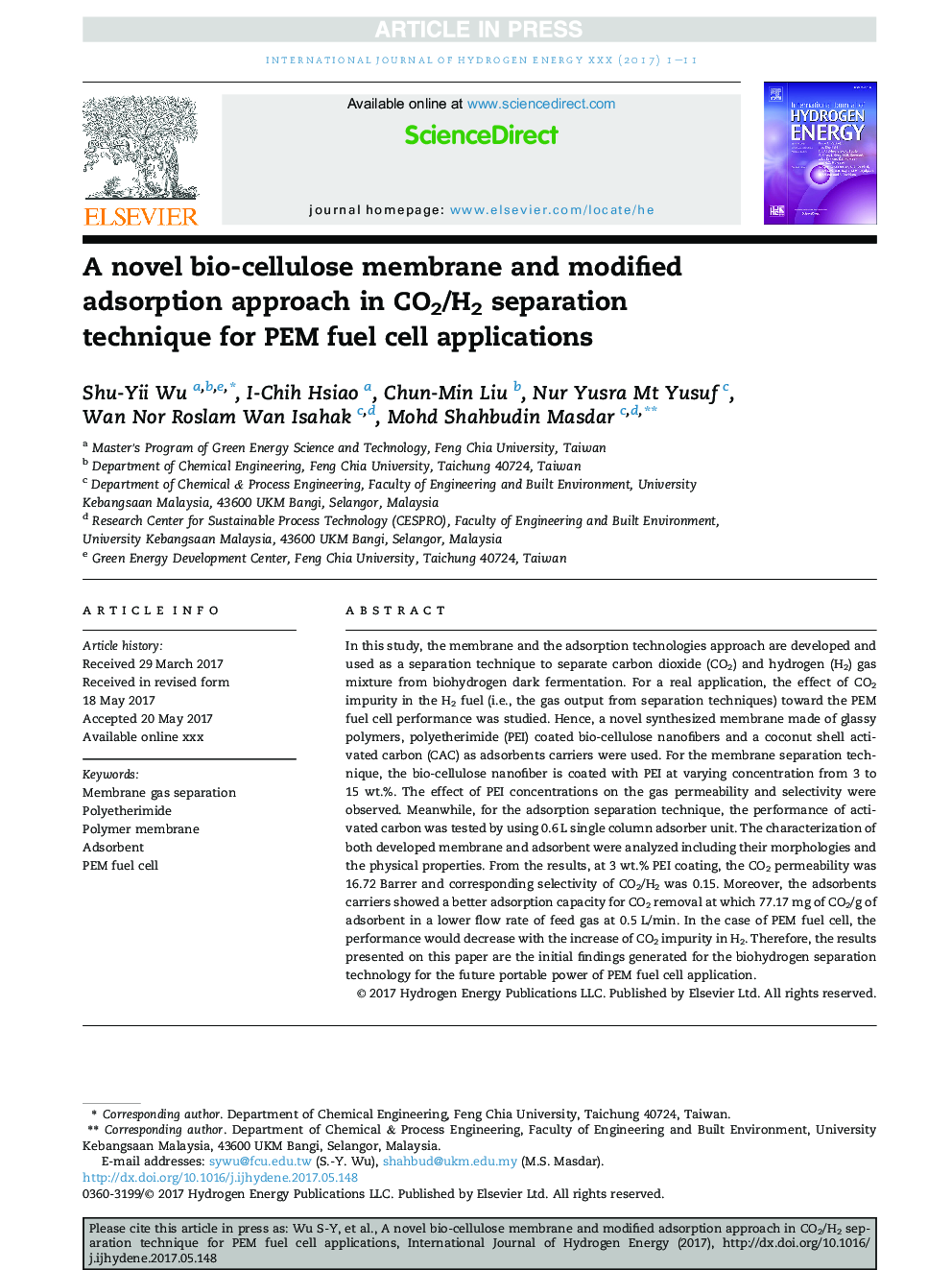| Article ID | Journal | Published Year | Pages | File Type |
|---|---|---|---|---|
| 7709589 | International Journal of Hydrogen Energy | 2017 | 11 Pages |
Abstract
In this study, the membrane and the adsorption technologies approach are developed and used as a separation technique to separate carbon dioxide (CO2) and hydrogen (H2) gas mixture from biohydrogen dark fermentation. For a real application, the effect of CO2 impurity in the H2 fuel (i.e., the gas output from separation techniques) toward the PEM fuel cell performance was studied. Hence, a novel synthesized membrane made of glassy polymers, polyetherimide (PEI) coated bio-cellulose nanofibers and a coconut shell activated carbon (CAC) as adsorbents carriers were used. For the membrane separation technique, the bio-cellulose nanofiber is coated with PEI at varying concentration from 3 to 15Â wt.%. The effect of PEI concentrations on the gas permeability and selectivity were observed. Meanwhile, for the adsorption separation technique, the performance of activated carbon was tested by using 0.6Â L single column adsorber unit. The characterization of both developed membrane and adsorbent were analyzed including their morphologies and the physical properties. From the results, at 3Â wt.% PEI coating, the CO2 permeability was 16.72 Barrer and corresponding selectivity of CO2/H2 was 0.15. Moreover, the adsorbents carriers showed a better adsorption capacity for CO2 removal at which 77.17Â mg of CO2/g of adsorbent in a lower flow rate of feed gas at 0.5Â L/min. In the case of PEM fuel cell, the performance would decrease with the increase of CO2 impurity in H2. Therefore, the results presented on this paper are the initial findings generated for the biohydrogen separation technology for the future portable power of PEM fuel cell application.
Related Topics
Physical Sciences and Engineering
Chemistry
Electrochemistry
Authors
Shu-Yii Wu, I-Chih Hsiao, Chun-Min Liu, Nur Yusra Mt Yusuf, Wan Nor Roslam Wan Isahak, Mohd Shahbudin Masdar,
